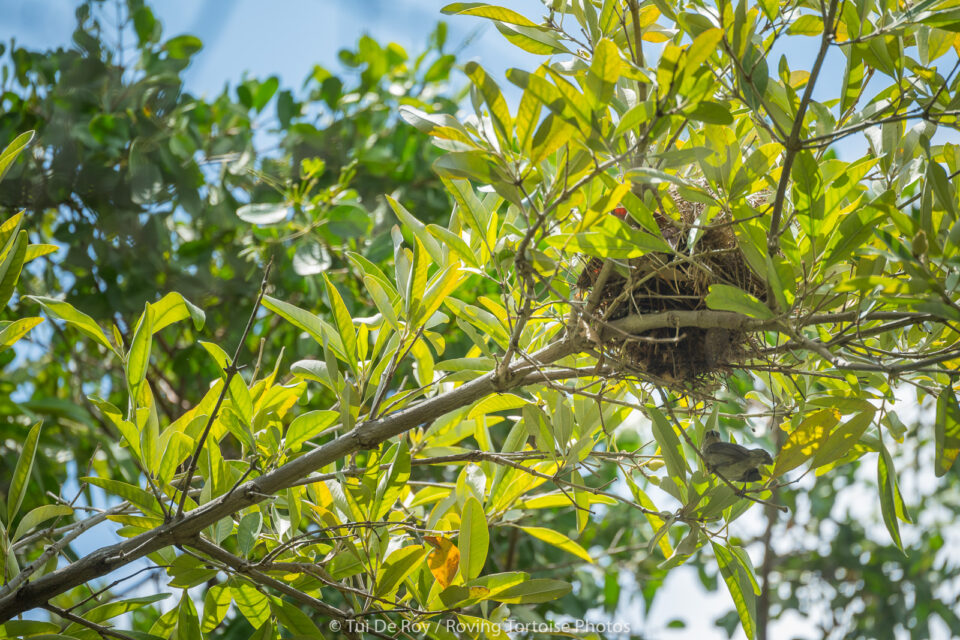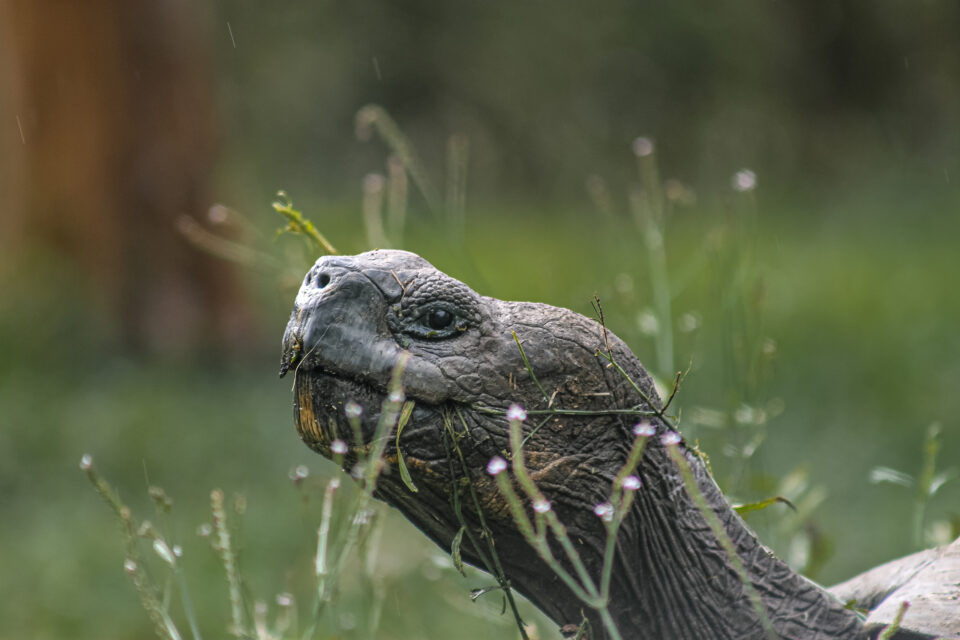

Guest Blog: The incredible story of “Numero Uno”
Find out about the heart-warming story of Numero Uno, one very lucky mangrove finch chick!
On 7 February, 2015, at Playa Tortuga Negra, Isabela, the Mangrove Finch Project team rescued a tiny five day old chick inside a nest. As is often the case for the mangrove finch, the nest was infested with Philornis downsi larvae – the blood sucking parasitic fly. Forty-seven individual Philornis larvae were found in the nest and an additional 31 larvae infesting the chick’s body.
The story of Numero Uno’s survival as part of this season’s “head-starting” program is testament to the critical work carried out by the Mangrove Finch Project team led by the Charles Darwin Foundation and Galapagos National Park Directorate, in collaboration with San Diego Zoo Global and Durrell Wildlife Conservation Trust.
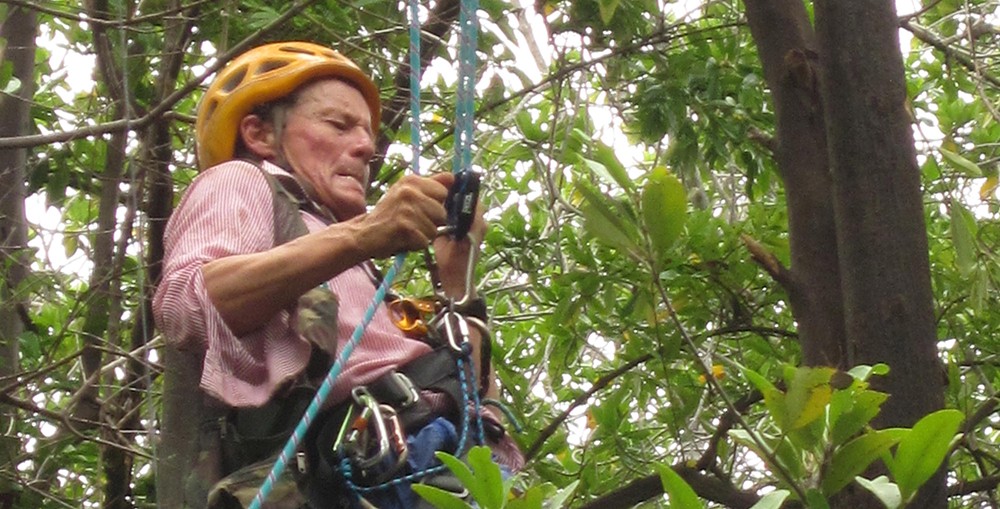
The challenge began when trying to get access to the nest – 18 meters of impossible to climb, flimsy black mangrove tree. Two separate pulley systems were placed around the trunk and four team members on the ground pulled the nest over until it was close to another tree. A specialist tree climber was then able to reach the nest with a pole and lower it to the ground. To the delight of the project team, a mangrove finch chick was found inside.
It is common for nests to be rescued in order to collect eggs and gather chicks which in natural conditions would have little chance of surviving the introduced parasitic Philornis downsi fly. The mangrove finch has an estimated population size of just 80 – 100 individuals and is classed as Critically Endangered on the IUCN Red List of Threatened Species. Philornis larvae is the principal causes of death, often accounting for 95% nest mortality. As this was the first mangrove finch to be rescued by the project team this season, in “Numero Uno” a name was born (“Number One” in English). Numero Uno will continue to be called an “it” as the sex of finches cannot be distinguished until genetic results are confirmed.
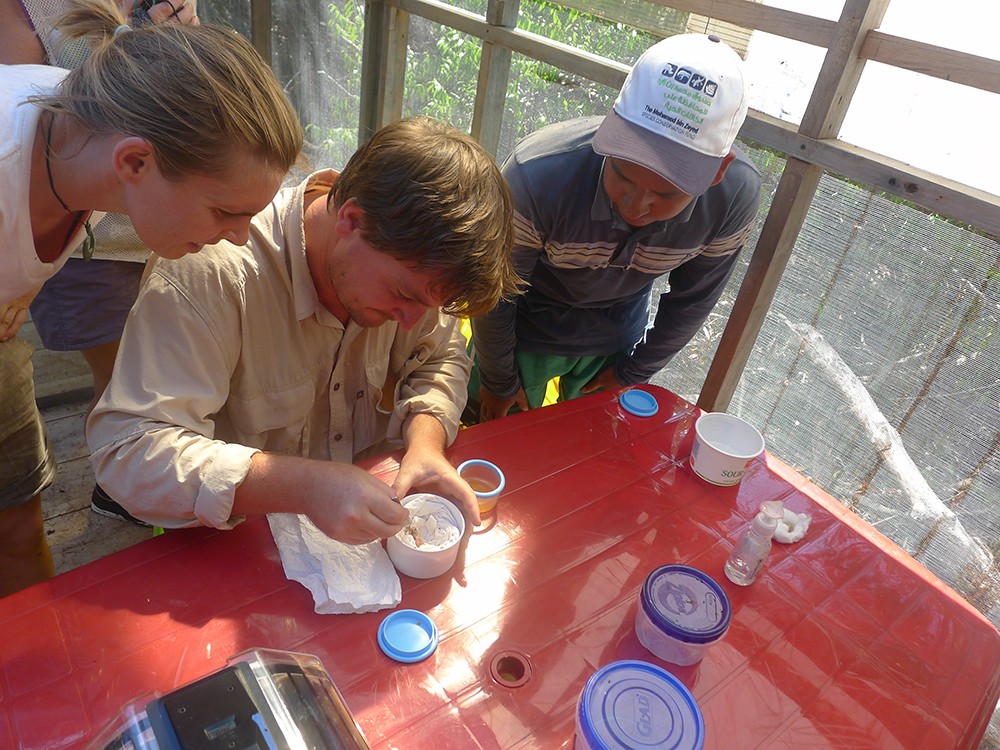
The field team carefully removed the larvae infesting Numero Uno’s body and began carrying out health checks, feeding the chick with highly hydrated food at regular intervals. Due to the infestation, injuries and risk of infection, over the next two days chances of survival were looking slim and it was vital to get the chick away from the field site to special care facilities. On 9 February, Numero Uno was transported by boat to the Charles Darwin Research Station (CDRS) in Puerto Ayora, Santa Cruz Island, to continue the captive rearing process in sterile, quarantined conditions.
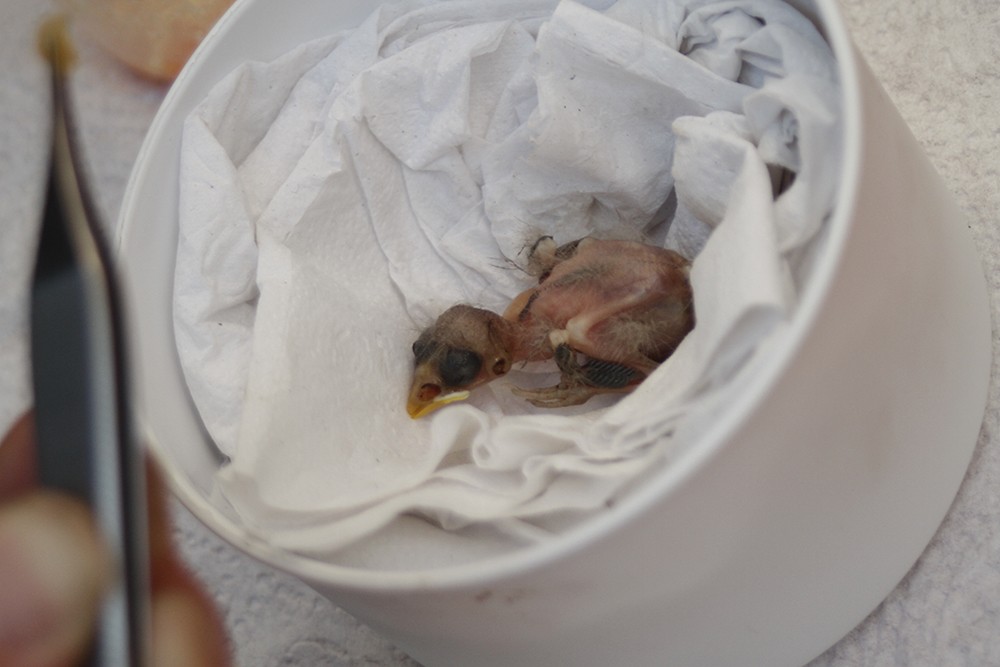
Upon arrival at the CDRS the rearing team administered antibiotics to stave off infection. The team also increased the chick’s daily food intake to regain the weight lost caused by Philornis infestation. As a result of Philornis, the back toe was twisted and had to be taped until held in the correct position. The facial injuries caused by the Philornis larvae also caused Numero Uno’s beak to grow skewed, with the top and bottom mandibles not meeting.
There were concerns that the misshaped beak could prevent Numero Uno from being able to feed independently and survive in the wild. However, on 20 February, Numero Uno fledged (when a bird acquires their flight feathers and leaves the nest) and started exploring the temporary cage surroundings. Just 10 days later Numero Uno was feeding independently.
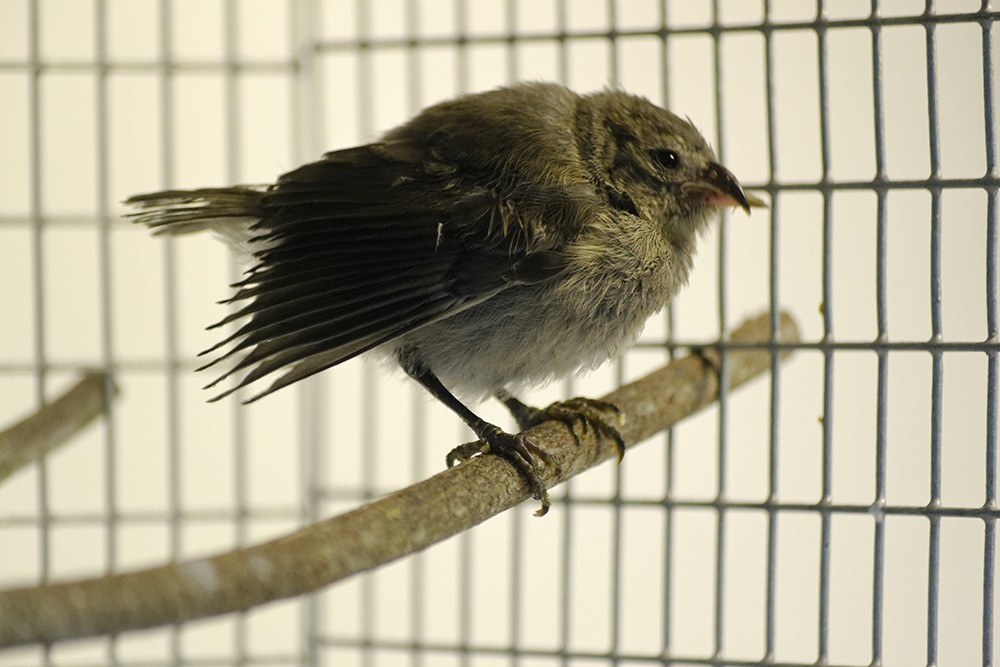
The Mangrove Finch Project team is currently caring for an additional eight captive hatched chicks aged between 17 and 30 days. The finches are fed 15 times a day, every hour, with a mix of introduced wasp larvae, moth abdomens, ground up one day old chicken chicks (from a certified disease free source), scrambled egg and papaya. The wasp and moths provide protein and hydration, the ground chicken is protein rich and also provides calcium; the egg and papaya another source of protein.
Today Numero Uno is 59 days old and exhibiting the development and foraging behavior expected at this age. Numero uno and its fellow chicks’ survival is down to the relentless dedication, passion and commitment provided by the project team and the financial support of international funders.
The Mangrove Finch Project is a bi-institutional project carried out by the Charles Darwin Foundation and Galapagos National Park Directorate in collaboration with San Diego Zoo Global and Durrell Wildlife Conservation Trust. The project is supported by Galapagos Conservation Trust, The Mohamed bin Zayed Species Conservation Fund, Durrell Wildlife Conservation Trust, International Community Foundation (with a grant awarded by The Leona M. and Harry B. Helmsley Charitable Trust), Galapagos Conservancy, and The British Embassy in Ecuador. Thank you also to Lindblad Expeditions and Metropolitan Touring for providing logistical support.
This article has been reproduced with permission from the website of the Charles Darwin Foundation.
Related articles

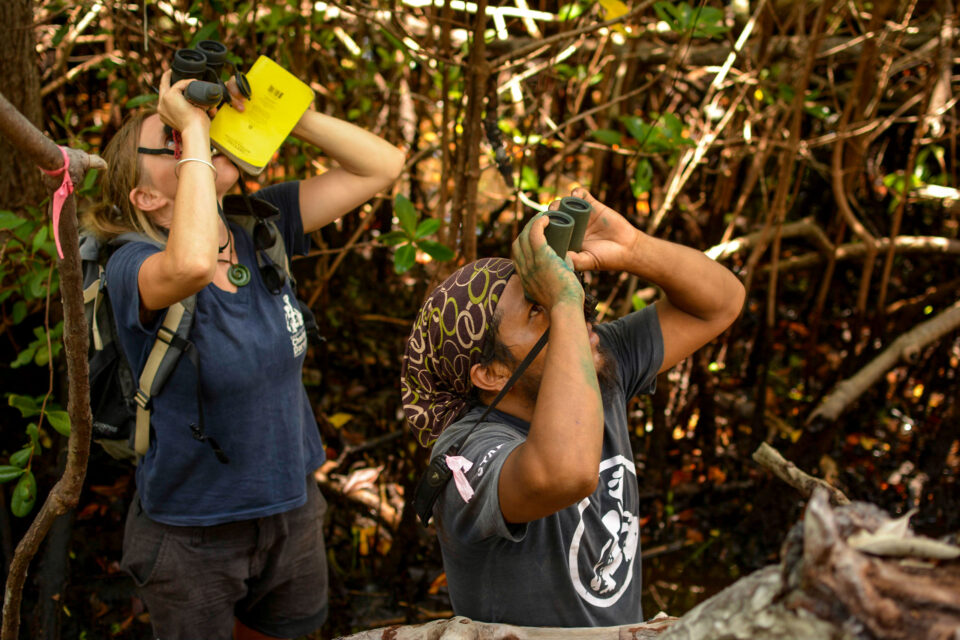
Mangrove Finch Project update
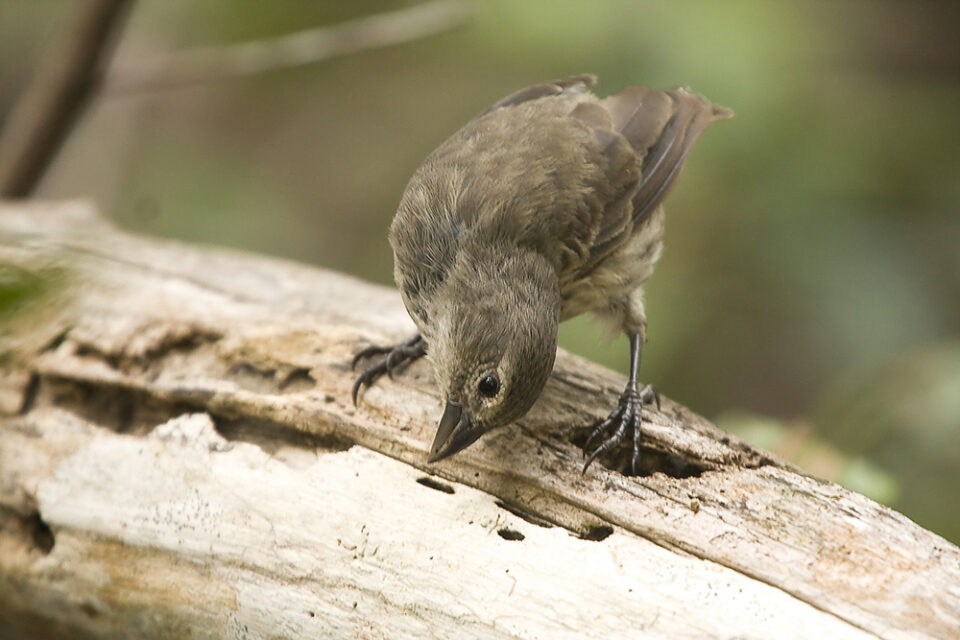
Mangrove Finch Project update
